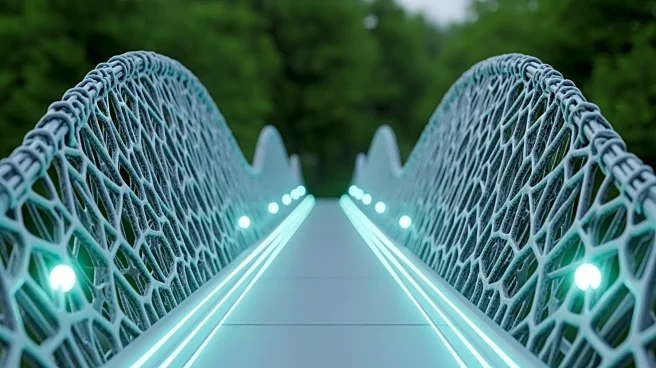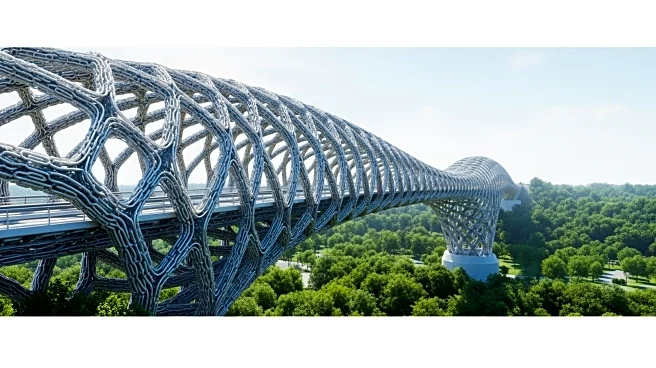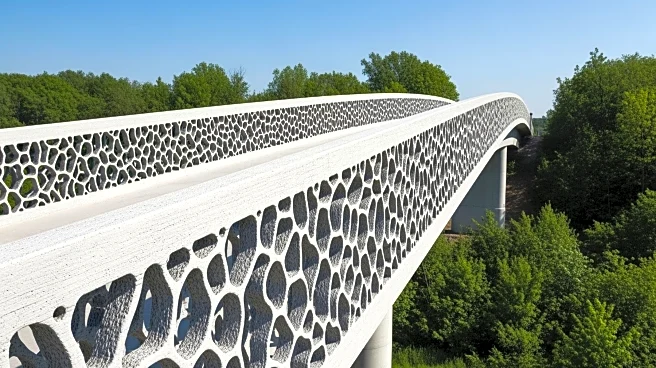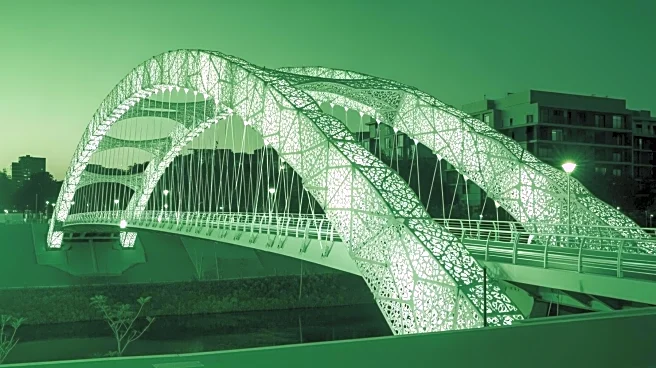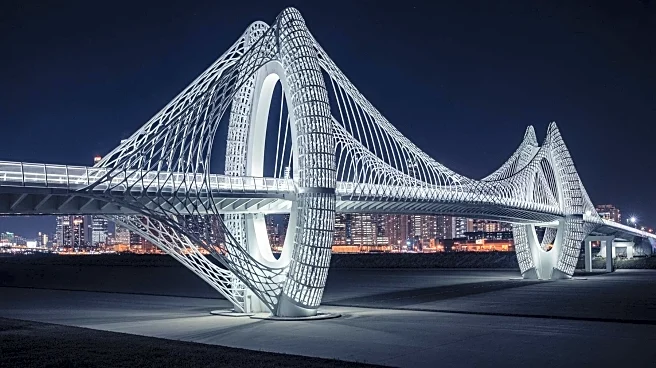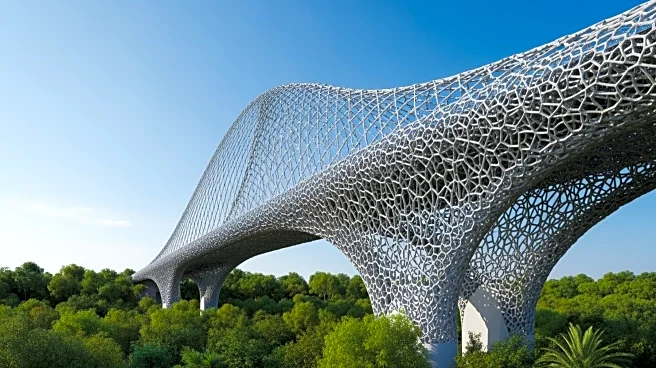What's Happening?
A research team at the University of Pennsylvania has developed a 3D-printed bridge prototype that absorbs carbon dioxide, aiming to reduce the carbon footprint of concrete, a material responsible for about 8% of global greenhouse emissions. The project,
named Diamanti, utilizes a sustainable concrete mixture and a design inspired by the porous structure of bones to enhance carbon absorption. The bridge, which uses 60% less material than traditional designs, is currently on display in Venice. The innovative concrete mixture, developed in collaboration with Swiss chemical company Sika, absorbs 142% more carbon dioxide than conventional mixes. The project is gearing up to build its first full-size prototype in France.
Why It's Important?
The development of the Diamanti bridge represents a significant advancement in sustainable construction practices. By reducing the carbon emissions associated with concrete production, this innovation could have a substantial impact on the construction industry, which is a major contributor to global emissions. The project not only addresses environmental concerns but also offers economic benefits by reducing material and construction costs. If widely adopted, this technology could lead to a decrease in the demand for traditional cement, thereby reducing the industry's overall carbon footprint. This development is particularly relevant as global demand for concrete continues to rise.
What's Next?
The Diamanti project has secured approval to construct its first full-scale bridge in France, with the location yet to be finalized. The team plans to monitor and evaluate the structure's performance in real-world conditions. Beyond bridges, the researchers are exploring other architectural applications, such as prefabricated floor systems. The success of these projects could pave the way for broader adoption of carbon-absorbing concrete in various construction applications, potentially transforming the industry and contributing to global emission reduction goals.
Beyond the Headlines
The Diamanti project highlights the potential for biomimicry in engineering, where natural structures inspire innovative solutions to modern challenges. The use of diatomaceous earth in the concrete mixture not only enhances carbon absorption but also raises questions about the scalability of such materials. As the construction industry seeks to balance sustainability with growing demand, projects like Diamanti could lead to a reevaluation of material sourcing and supply chains. This development also underscores the importance of interdisciplinary collaboration in addressing complex environmental issues.
